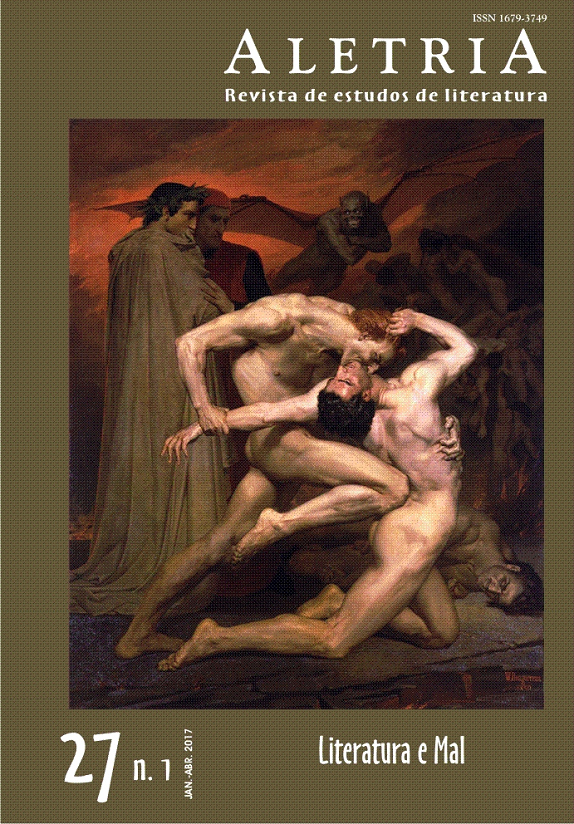An Evil to Be Repaired: Violence Against Women in the Tales of Gonçalo Fernandes Trancoso
DOI:
https://doi.org/10.17851/2317-2096.27.1.211-228Keywords:
Portuguese Renaissance, sexual violence, noble ethics, Gonçalo Fernandes TrancosoAbstract
Although the first book of short-stories in Portuguese literature, Contos e histórias de proveito e exemplo, by Gonçalo Fernandes Trancoso (Lisbon, 1575), approaches light, sometimes amusing narratives, serving for the moral example of catholic readers, two tales stand out because of its explicit violence against women: narratives I 3 and III 6 (according to the modern edition that includes the stories prohibited by the Inquisition in 1585), in which two young and poor girls are kidnaped and raped by noble men. Considering a historical analysis, that evinces the woman not exactly as the subject of violence, but as an object of a household damage (because along the Renaissance she represented an ethic patrimony of the family), this paper aims at showing that, more than stories about violence against women, the selected short-stories represent narratives on how nobility is able to restore its values and prove that, behind the appearance of evil and brutality, there is an essence of what means to be a noble.
Downloads
References
BERARDINELLI, Cleonice. Um best-seller do século XVI. In: BERARDINELLI, Cleonice. Estudos de literatura portuguesa. Lisboa: Imprensa Nacional-Casa da Moeda, 1985. p. 77-80.
BOCCACCIO, Giovanni. Decameron. Trad. Ivone C. Benedetti. Porto Alegre: L&PM, 2013.
DASÍ, Emilio J. Sales. “Ver” y “mirar” en los libros de caballerías. Thesaurus – Boletín del Instituto Caro y Cuervo, Bogotá, tomo XIV, n. 1, 1999, p. 1-34.
DONATI, Cesarina. Non solo virtuosa: diverse tipologie femminili nella narrativa di Gonçalo Fernandes Trancoso. Revista de Letras, Vila Real, v. 2, n. 8, p. 123-134, dez. 2009.
DUARTE, Dom. Leal conselheiro. Ed. João Maria Barbosa. Lisboa: Imprensa Nacional-Casa da Moeda, 1982.
FERRO, Manuel. Aspectos da recepção do “Decameron” nos “Contos e histórias” de Trancoso. Separata de Estudos Italianos em Portugal, n. 51-53, p. 179-206, 1988-1990.
FINAZZI-AGRÒ, Ettore. A novelística portuguesa do século XVI. Trad. Carlos Moura. Amadora: Ministério da Educação e Cultura, 1978.
MIMOSO, Anabela. Contos & histórias de proveito & exemplo: uma obra exemplar. Línguas e Literaturas – Revista da Faculdade de Letras do Porto, v. 15, p. 259-329, 1998.
NOBRE, Cristina. Um texto instrutivo do século XVI de Gonçalo Fernandes Trancoso. Leiria: Magno Edições, 1999.
PALMA-FERREIRA, João. Gonçalo Fernandes Trancoso. In: PALMA-FERREIRA, João. Obscuros e marginados: estudos de cultura portuguesa. Lisboa: Imprensa Nacional-Casa da Moeda, 1980. p. 29-83.
SOUZA E SILVA, Michelle. Ler e ser virtuoso no século XV. São Paulo: Editora UNESP, 2012.
TRANCOSO, Gonçalo Fernandes. Contos e histórias de proveito e exemplo. Ed. Fernando Ozorio Rodrigues. Niterói: Editora da UFF, 2013.
VIGARELLO, Georges. História do estupro: violência sexual nos séculos XVI-XX. Trad. Lucy Magalhães. Rio de Janeiro: Jorge Zahar, 1998.
Downloads
Additional Files
Published
How to Cite
Issue
Section
License
Copyright (c) 2017 Luís André Nepomuceno (Autor)

This work is licensed under a Creative Commons Attribution 4.0 International License.
Authors who publish with this journal agree to the following terms:Authors retain copyright and grant the journal right of first publication with the work simultaneously licensed under a Creative Commons Attribution Non-Commercial No Derivatives License that allows others to share the work with an acknowledgement of the work's authorship and initial publication in this journal.Authors are able to enter into separate, additional contractual arrangements for the non-exclusive distribution of the journal's published version of the work (e.g., post it to an institutional repository or publish it in a book), with an acknowledgement of its initial publication in this journal.Authors are permitted and encouraged to post their work online (e.g., in institutional repositories or on their website) prior to and during the submission process, as it can lead to productive exchanges, as well as earlier and greater citation of published work (See The Effect of Open Access).





